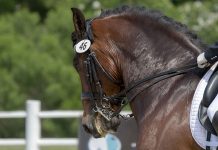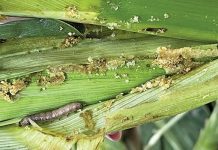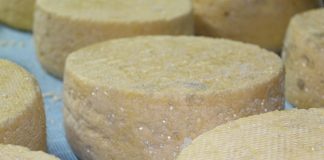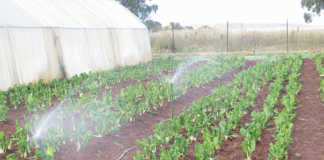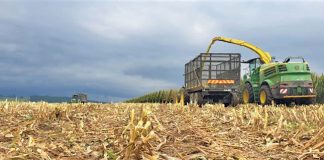
Photo: Lindi Botha
The use of netting for agricultural applications has increased significantly in the past few years. This is not only due to the protection nets offer against increasing incidents of hail, but also because of the ample benefits to packout rates.
Research conducted by Citrus Research International (CRI) shows that nets bring benefits like increased yields, a faster time to maturity, reduced production costs and better risk management.
READ How an SA producer grows 70 000t of citrus a year
Paul Cronjé, a researcher at CRI, highlights the greater importance of gaining these benefits: “The rapid expansion of citrus plantings across South Africa will have a definite and significant impact on the South African citrus industry. Whether markets will absorb the increased fruit supply and what the subsequent repercussions on the current profit margins in the next five to 10 years will be is unclear and somewhat unsettling.
“Another more worrying problem is the issue of climate change and its effects on citrus production, as current projections identify South Africa […] will be significantly affected.
“During the past few years, high temperature extremes have increased, while low temperature extremes have decreased significantly.
“Some of the warmest monthly temperatures have recently been recorded, and even higher temperatures and more frequent warmer days are predicted,” he said.
Cosmetic damage
As a result, Cronjé predicts small fruit-size problems will increase, as well as orchard water usage, and fruit cosmetic damage due to wind, hail and sunburn.
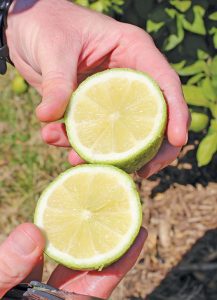
Long-term strategic planning and embracing the latest research findings and subsequent novel on-farm technologies will be the main determinate of producer wealth and competitiveness of the industry.
This is where shade-netting can play a significant role as it mitigates many of the risks associated with climate and market-related challenges.
Furthermore, shade nets could also enable citrus production in areas traditionally considered unsuitable for production, as well as buffer against negative impacts of climate change.
A micro-climate
Providing coverage for orchards brings about significant changes in the immediate atmosphere around the trees.
This includes reduced light intensity, wind speed by up to 90%, as well as buffering temperature extremes and increasing relative humidity.
These are all factors that influence quality, which means that being able to control them is likely to result in better quality.
READ New cultivar excels on historic citrus farm
Nets also boost plant vegetative development. Cronjé says shade nets increase leaf stomatal conductance during hot summer days (a factor of transpiration and sap-flow) by reducing photo-inhibition caused by extreme irradiation and mitigating the midday depression.
“Overall, in terms of horticultural plant responses, shade nets favour the development of vegetative tissues (shoots and leaves) instead of reproductive and root growth (measured in seasonal gain in dry mass).
“However, in experiments on the Orri variety mandarin trees, shade nets resulted in an up to twofold increase in fruit yield (kg fruit/tree) and significantly increased tree water usage efficiency (WUE) and fruit quality.”
Does colour matter?
Much research has been conducted on coloured shade netting and the benefits each respective tint can achieve.
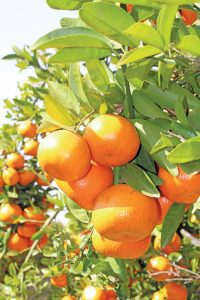
According to CRI’s research, trees under 18% white nets consistently performed better than those under red (25%), yellow (24%), and transparent (13%) shade nets.
Trees under dark nets (red and yellow) exhibited increased vegetative growth and reduced yield, while water consumption under dark nets was somewhat higher than under white and transparent ones.
Research
With the Nadorcott mandarin variety being especially vulnerable to outward appearances, since the variety is mostly aimed at the higher-end market, the CRI conducted research to determine if shade netting would aid growers in their packouts.
Orchards in Citrusdal, Western Cape, were used to conduct the study over the 2016 and 2017 season. One orchard was covered with a 20% white shade net, while another was left open.
Hourly logging of solar radiation, air and soil temperatures, relative humidity, soil water content and wind speed were conducted, in addition to monthly measurements of photo-assimilation, stomatal conductance and leaf gas exchange.
Results showed that solar radiation was reduced by around 17% under shade netting, and mean and maximum temperatures were reduced on top of the canopy, whereas minimum temperatures were higher.
READ Precision irrigation boosts yield on Mpumalanga citrus farm
However, the temperature within the canopy – 1,5m from the soil level – was higher under shade netting and this led to a significant increase in effective heat units as well as relative humidity under the netting.
This in turn lowered the vapour pressure deficit. Average soil temperature was higher under shade netting resulting from less diurnal fluctuations between minimum and maximum temperatures.
Soil water content increased by around 17%. Further, the average and maximum wind speed was reduced under shade netting, which acted as an artificial windbreak.
Cumulatively, the shade netting had a positive effect on carbon assimilation during the summer months coinciding with phase two of fruit growth.
The study concluded that 20% white shade netting affected the microclimate of the Nadorcott mandarin, thereby positively affecting a tree’s physiology by allowing an increase in photosynthesis.
Controlling light
Since nets have an impact on the amount of sunlight an orchard receives, which in turn affects production, the percentage of shade a net provides is an important consideration when erecting nets.
A study by Johané Botes as part of her degree in horticultural science at the University of Stellenbosch, looked at the impact of light on citrus quality.
She found that citrus trees can effectively photosynthesize under relatively low photosynthetically active radiation (PAR), which means shade nets designed to reduce high light intensity may not necessarily influence carbohydrate production negatively.
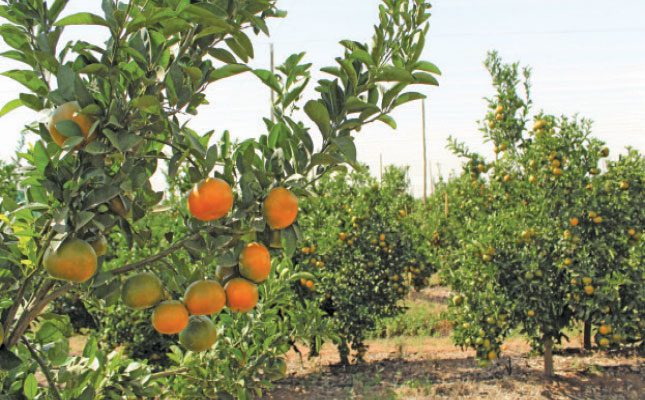
This means citrus flowering will not be influenced directly by shade nets as light has an indirect role in the reproductive development of citrus trees through the supply of carbohydrates from photosynthesis.
“Light, however, has been shown to have an important effect on the internal fruit quality aspects such as total soluble solids and vitamin C content, based on studies where differences have been found in relation to canopy positions.
“If photosynthesis is then negatively impacted by shade nets, soluble solids concentration and ascorbic acid content in the fruit will diminish.”
Rind coloration, which is considered the most important external quality trait in citrus fruit, is particularly influenced by light, especially when comparing rind coloration differences in relation to canopy positions.
Botes notes that based on current understanding of colour development, it could be negatively impacted under shade nets with a high shading factor where light levels are greatly reduced.
However, she adds that as shade nets also cause light diffusion and scattering under the nets, it is likely that light penetration may increase into the tree canopy, possibly resulting in an overall improved coloration of the fruit.
READ Fruit sector research: power-generating trees, solar nets, and more!
The CRI study, conducted in Citrusdal, also had conflicting results. Monthly evaluation of fruit size, rind colour, internal quality parameters (like Brix levels and citric acid ratio) and the incidence of sunburn was performed on orchards under 20% white shade netting and open orchards.
The fruit diameter was not influenced by shade nets in 2016, however, in 2017 a larger fruit diameter was measured for shade net fruit. Rind colour development and internal quality were not influenced negatively by the netting.
Shade nets were effective in reducing the incidence of sunburn significantly in both seasons, 2016 and 2017. Moreover, post-harvest fruit quality was not negatively affected by the shade net treatments.
Both the CRI and Botes’s study conclude that more research is required before a definitive conclusion can be reached on the effect of shade nets on internal fruit quality.
But the research is clear on the benefits for external fruit quality and orchard growth. And with a sea of citrus on the market, having deep-coloured, larger fruit that stands out is an important factor in keeping a citrus farm sustainable.
Email Paul Cronje at [email protected].

